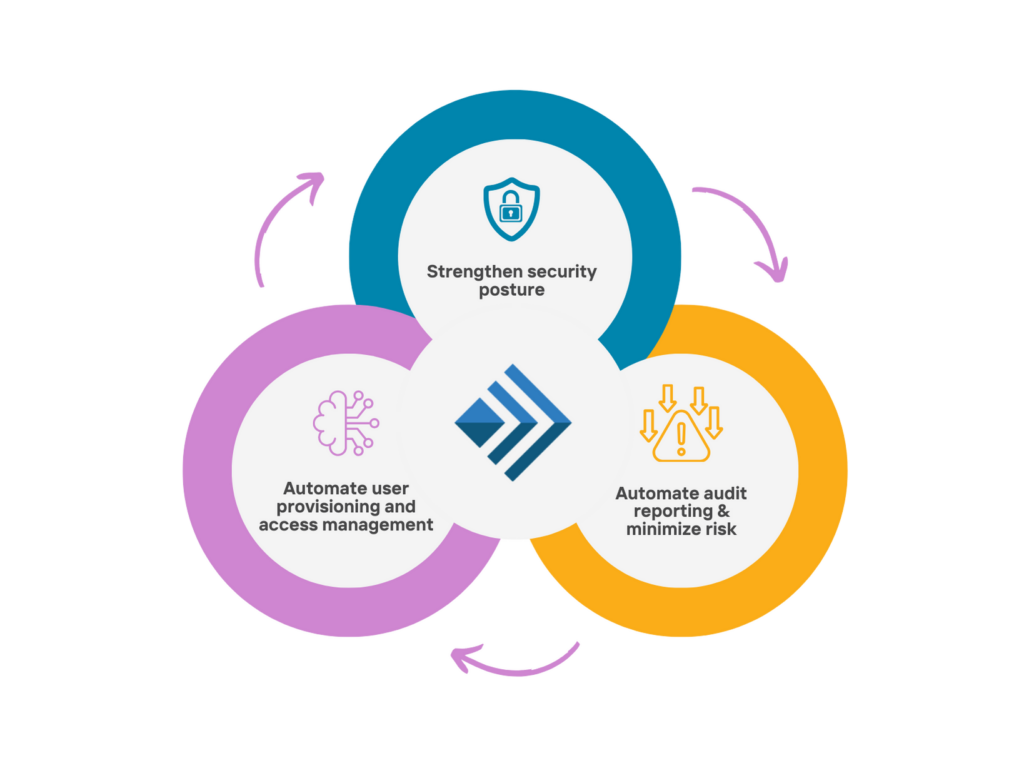
The proverbial question, “is the glass half empty or half full?” is typically used rhetorically to determine whether someone perceives a situation as a cause for pessimism (half empty) or optimism (half full).
Chances are, if you order a drink at a restaurant and the server delivers a glass that is only halfway filled, you are going to see it as half empty and likely demand that you receive the full glass that you are paying for.
In a perfect enterprise scenario, the same thinking should apply to identity and access management (IAM) systems, and yet in many cases it is not. A lot of organizations are only receiving half of the value they could be getting from their existing IAM investments—or maybe even less than half. That is because they are using only a fraction of the capabilities built into these solutions.
It is important to point out that getting IAM completely right is not easy, even for experienced cyber security programs. That is especially true when organizations cobble together IAM solutions using various products from a variety of vendors. And many are doing just that. In these cases, organizations are using only a portion of the functionality the tools offer. That means they are paying for a lot of functionality that they are not putting to use, wasting valuable security resources that are not always easy to come by.
It does not have to be this way. There are effective solutions to the IAM half-empty problem, and one is to deploy an managed identity services offering. This is a cloud-based service for IAM that provides all the capabilities organizations need related to identity management.
As a managed services provider, Simeio aims to take the complexity out of IAM, and ensure that companies are getting the full value out of their investments.
A key benefit of an IAM service is that it ties together the key pillars of managing enterprise identity and access programs, something that is not always possible with point solutions from different vendors. For example, offerings such as customer identity and access management (CIAM), identity governance and administration (IGA) and privileged access management (PAM) are siloed. That keeps them from sharing information with each other and working in unison.
The traditional vendor approach to PAM and other identity technologies also do not scale with the current needs of a growing enterprise. This, combined with the ever-expanding DevOps pipelines and SaaS adoption, siloed solutions quickly lose their overall value. Organizations need an integrated identity solution that allows them to keep pace with business agility, while simultaneously balancing the security needs of an ever-changing business environment Trying to manage these various disciplines as silos is a mistake, because that’s how companies end up paying for features or capabilities that they are not using or are using inefficiently. Often products are brought in to address extremely specific tasks, but companies end up paying for functionality that are not putting to full use. With limited resources, security teams are often understaffed, and do not have the bandwidth required to be effectively trained to take advantage of the complete functionalities these solutions offer.
However, when identity and access management is offered as a service, the complexities are removed, and these different functions can be managed and used as part of a cohesive unit. By having a service provider manage IAM, organizations can receive the value they should be getting from IAM tools.
Managed identity services eliminate the heavy up-front capital investments needed for a typical IAM infrastructure. Best of all, these cloud-based services eliminate the complexity of AIM IAM and deliver consistent and reliable identity services and a single point of contact for operations and support.
IAM is becoming a bigger priority for organizations. A report by research firm Fortune Business Insights projects that the IAM market will grow from $13.41 billion in 2021 to $34.52 billion in 2028, at a compound annual growth rate of 15% during that period. Among the drivers contributing to market growth are the dramatic rise of remote work due to the pandemic, increased cloud adoption, a higher rate of cyber-crime such as identity fraud, sophistication of attacks, and breaches and rising regulatory compliance requirements.
Identity management has become especially important as organizations move to a Zero Trust security model. The federal government is making a move to Zero Trust a priority, following the May 2021 executive order that mandates agencies to adopt a Zero Trust architecture.
Making the move to Zero Trust cannot be done in a vacuum. Moving to Zero Trust demands a considerable investment and will require the organization to not only deploy identity-aware security solutions, but the organization will need to review their policies and business processes. In addition, a need to educate business and security leaders about a Zero Trust mindset is far more difficult when identity technologies are siloed and not integrated.
Establishing an effective IAM program as part of their overall cyber security strategy, organizations can address the security challenges of remote and hybrid work, the ongoing shift to the cloud, and other challenges. It is also crucial to derive full value from the tools and platforms that have been implemented and take the big step toward embracing Zero Trust security. And they can look at their IAM operations and see a glass that is filled to the brim.

